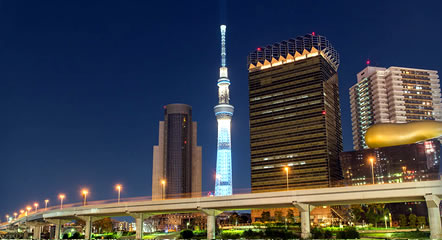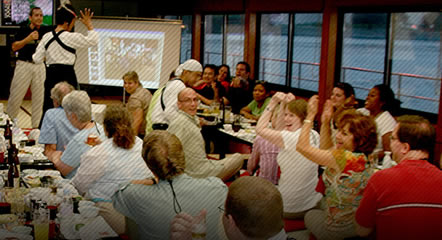Experience traditional Japanese culture and indulge yourself with gorgeous Japanese food while exploring the beautiful scenery of the Sumida River and Tokyo Bay.
Most of our guests enjoy our signature shared and chartered cruises. While the vantage points and routes may be changed slightly, you will see a diversity of the major sights of Tokyo.
Pass under a variety of bridges before we take you to an up- close and personal viewpoint of Tokyo Sky Tree. The 634-metre-high tower became the second largest structure in the world and the tallest tower at the time of opening in February 2012. You will also get a glimpse of old Tokyo Tower. Originally built to a height of 333 meters in 1958, it was the tallest structure in Japan until the construction of Tokyo Sky Tree. With the advent of digital broadcasting Tokyo Tower was not tall enough to service the entire Tokyo area (thus the construction of Tokyo Sky Tree) but still serves as a radio tower, and iconic tourist destination attracting millions of visitors every year.
On your way to futuristic Odaiba, you will cross under the Rainbow Bridge, Tokyo’s landmark 798-meter span that connects the core of Tokyo to the Odaiba area. This two-platform bridge not only accommodates the Shuto Expressway No.11 Daiba Route but also serves as a train bridge for the Yurikamome Line as well. Once you go under the Rainbow bridge, you will navigate around a military battery created during the end of the Tokugawa Shogunate (around 1854) and end up directly in front of futuristic Odaiba. Head on out to the upper/outer deck to catch a view of the stunning Fuji Television building with its stunning architecture and surface that acts as a light up display. That is truly awesome.
There is much more to see outside the boat. Even more fun time, great food and drink will be presented to you inside during the cruise. Come join us and be part of the Yakatabune legend!

